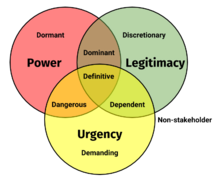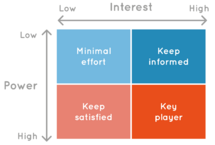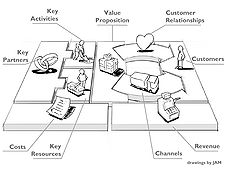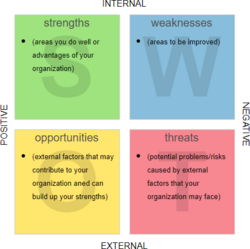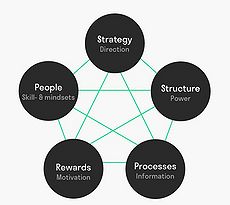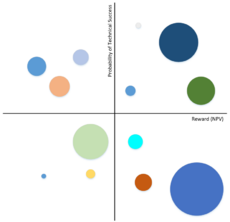Rambøll2020
Collection of tools
Risk Management in Project Portfolios
Project Risk management enables an organization to reduce the probability of uncertain and negative events, along with this, it aims to capture opportunities. From the portfolio level’s perspective, the uncertainties are coming from project uncertainties.
The information flow from project management to portfolio management is essential for the success of the project portfolio, otherwise it is shown to be quite difficult to perform risk analysis in the portfolio level.
Different areas of uncertainty can be found on the portfolio level. These areas are; uncertainty from organizational complexity, uncertainty from the environment and uncertainty from single project, which is relevant to the portfolio due to changes, variances and unexpected events [1].
Including Risk Management in Construction Projects
Construction projects can become extremely complex and very complicated; Therefore risk management of such projects are crucial, and even more so when the project in question is worth millions of dollars, with a strict deadline. The risk management aspect applied to give a clear understanding of the magnitude of the risk for the given projects. Risk analysis is the essential feature of project management, enabling one to deal effectively with uncertainty and unexpected events and to achieve a successful project.
The benefits of the risk management process include identifying and analyzing risks, and improvement of the construction project management processes and effective use of resources.[2].
Mapping Stakeholders/Stakeholder Management [3]
[4]
A stakeholder is a person, group or organization that has interests in, or can affect, be affected by, or perceive itself to be affected by, any aspect of the project. Stakeholder management is the art of keeping your stakeholders’ content and making decisions that are mutually beneficial. To aid the process of managing stakeholders, they are categorized. There are several ways to categorize stakeholders: Classification according to "direction", power, legitimacy, and urgency classification and detailed stakeholder classification [Figure 1].
Secondly, we want to evaluate a stakeholder match by Stakeholder Compatibility. This is done by categorizing the relationships into the “Four Stakeholder Configurations”. It is also this step where the stakeholder matrix [Figure 2] comes into play, which is an interest/power matrix. Lastly Stakeholder Management involves creating stakeholder engagement. In this step we utilize “Stakeholder Engagement approaches” and “Stakeholder integration methods”.
Fault Tree Analysis
This tool is one of the methods that is used the most in system reliability, maintainability and security analysis. It is used to determine which undesired events could happen. This method starts by having a conclusion from where specific causes are determined by constructing the fault tree. When using this method, the purpose is to identify potential causes of a failure before it happens. When the analysis is performed it can be determined what happens based on the different factors through the tree. [5]
The benefits of this method is that it creates a visual understanding of the events and it is easy for other people to get a quick understanding of the results. The fault tree is like a foundation for further analyses. It is easy to go through the tree to check for failures in other or future projects, to make sure that the risk for bad events are minimized. The model also must be updated if it is going to be used later on, which can be time consuming if there is no one currently working with the method.
This method is often used in engineering industries where there may be huge consequences of failures.
Step 1: Define the undesired event: the primary fault or failure being analyzed
Step 2: Deduce the event's immediate causes
Step 3: Keep stepping back through events until the most basic causes are identified
Step 4: Construct a fault tree diagram
Step 5: Evaluate your fault tree analysis [6]
Earned Value Management
Earned value management (EVM) is a tool which helps project managers with the measuring of project performance. This method is used to find variances according to work performed and work planned in different projects and is based on cost and scheduling.
EVM is used in companies in different industries, consulting firms and others.
EVM consists of different data elements such as; budget for a project vs total cost of the project, cost for work scheduled vs the amount of actual work done, etc. [7]
By asking the questions “Have we got to where we want to be in the project?” and “When are we going to finish this project?”, it helps to define a more specific plan as to where the project is going to end.
When the value of work done is equal to the planned the basic principle of EVM is achieved. The following indicators can be used to describe how good/bad the project are performed:
- Schedule variance (SV); difference between actually work done vs the amount of planned work to be done. This will show if the project follows the time plan.
- Cost variance (CV); difference between the cost for the project vs the budget that was made. This shows if the project is on budget.
- Schedule performance index (SPI); ratio between the approved budget for the performed work to the approved budget for the planned work in the first place. A measure of the project’s time efficiency.
- Cost performance index (CPI); ratio between approved budgets for the performed work to the spent budget for the stipulated work. [8]
Lessons Learned
This tool builds on knowledge management, specifically knowledge sharing. It is a project management tool that aims to bring together any insight gained during a specific project, after identifying what went wrong and what went right.
PRINCE2 (PRojects In Controlled Environments, version 2) is a commonly used framework, but companies tend to emphasize the initialization and execution of a project, and disregard the closing of a project. The Lessons Learned tool consists of the following steps:
Step 1: Collecting (Record)
Step 2: Validating
Step 3: Storing (and categorise)
Step 4: Disseminating (Communicate)
Step 5: Reuse[9]
Business Model Canvas
The business model canvas [Figure 3] is a tool that describes any company's core business model. The model provides a visualization of the company in an effective manner, and clearly show the relation of the nine building blocks. It lays the groundwork for an easier assessing process of the company's business model, that is needed to make any effective and useful changes.
The nine building blocks of the business model canvas are as followed; KP is key partners, key activities, key resources, value proposition, customer relationship, channels, customer segment, cost structure and revenue streams.
The use of this tool, is to divide the business model into smaller parts/blocks which provide a better overview of the whole picture, and make the process for any change tangible.
SWOT
SWOT-analysis is a tool that helps the organization to identify strengths, weaknesses, opportunities and threats. The internal factors affects the strengths and weaknesses of the organization and the external factors affects the environmental opportunities and threat.
It is a great way to define what works well for the organization, and what does not.
The first step for the manager is to identify the strengths and weaknesses from the current situation of the organization. Afterwards it is desired to benefit from the strengths and correct the weaknesses that may affect the organization in the future.
The second step is defining the external factors and taking advantage of any opportunity that might occur and work on the threats.
The tool ensures the managers that they make the most of what the organization got and reduces the risk of failures by understanding and defining what the organization is lacking, which will result in a better position in that market.
[10]
Four Classical Functions of Management
This tool can be used to accomplish business goals efficiently by accessing four functions. The first function of the tool is planning. Here the organizational goals and courses of action to achieve these goals are chosen appropriately. The second function is organizing. Managers here establish task and stucture which provide a framework for how people are going to work together in order to achieve the organizational goals. The third function is leading. This part consists of the manager motivating, energizing and coordinating induvial and group to ensure progress towards the goals are made. The fourth functions is controlling. This part consists of establishing accurate meaning and monitoring systems to access how well the organizational goals has been achieved. [11].
STAR-model
The star model is a great organizational design tool, it describes how 5 important areas of an organization should be connected and aligned for everything to work smoothly. The model consists of following five areas:
- Strategy
This area defines the direction of an organization through their missions and goals, whereas the organizational structure is determined through these. - Structure
The structure indicates where the decision-making power is located. This could be regarding the span of control at each level in the hierarchy or number of specialties etc. - Business, processes & lateral links
This area defines how the information and decisions are shared throughout the structure. - Rewards systems
The motivation of the employees are kept through the reward system. - Human resource management
The employees’ skills and mindsets are defined through training and internal rotation in order to get the best out of them. [12]
Best Practices for Project Portfolio Selection[13]
According to studies it has been found that there are five tools, used by a larger amount of organisations, which ensures good project portfolio management.
The five tools/methods are the following:
Financial methods:
The financial methods include a variety of profit and return metrics i.e. NPV (Net Present Value) and ROI (Return on Investment). The financial methods can be used to rank projects by comparing the expected economic value that each project will generate.
Business strategy:
The business’s strategy is used to allocate resources. The resources are allocated into separate areas based on their strategic priorities.
Bubble diagram:
The idea is fairly basic; projects are plotted on an X-Y coordinates map often as balloons or circles. The Bubble diagram consists of three sets of data; of where they are expressed through the X-axis, the Y-axis and the size of the bubbles, as seen in Figure 6.
Each of the four quadrants represents a category and each project will be placed in one of the quadrants. The most common bubble diagram is the Risk/Reward diagram where you typically have the NPV on one axis and the probability for success on the other axis.
Scoring models:
Often used by organizations to create a fast and intuitive overview of the projects rating. It could as an example be a rating scale from 0-10. Some of the most commonly used criteria are financial reward and strategic fit.
Checklists:
The checklist consists of several Yes/No questions as the evaluation criteria. To determine whether a project is good enough it must achieve enough Yes’s. Checklists are usually viewed as a supporting tool.
Dependency of each other:
Studies show that 47,5% of the best organizations use three or more methods.
References
- ↑ Wiki.doing-projects. Risk management in project portfolios. Wiki.doing-projects. Retrieved from http://wiki.doing-projects.org/index.php/Risk_management_in_project_portfolios
- ↑ Intechopen. Risk Management in Construction Projects. Retrieved from https://www.intechopen.com/books/risk-management-current-issues-and-challenges/risk-management-in-construction-projects
- ↑ Wiki.doing-projects. Stakeholder Management. Wiki.doing-projects. Retrieved from http://wiki.doing-projects.org/index.php/Stakeholder_Management?fbclid=IwAR3U2VJAeVPPLIoqnqVVGCyfZOtXbvyutGO_lgejXhlkxY4ZQvZTwebugW4#Differences_in_stakeholder_influence
- ↑ Wiki.doing-projects. Wiki.doing-projects. Stakeholder Management. Wiki.doing-projects. Wiki.doing-projects. Retrieved from http://wiki.doing-projects.org/index.php/Mapping_stakeholders?fbclid=IwAR2lLCqNabItIShY_-HNbD8AxFQLTRmy6w1cztdCcTVXTYHyNs888HYDoa0
- ↑ ASG. What Is a Fault Tree Analysis?. ASQ. Retrieved from http://asq.org/quality-progress/2002/03/problem-solving/what-is-a-fault-tree-analysis.html.
- ↑ Smartdraw. Fault Tree Analysis. Smartdraw. Retrieved from https://www.smartdraw.com/fault-tree/.
- ↑ . Project Smart. EARNED VALUE MANAGEMENT EXPLAINED. Project smart. Retrieved from https://www.projectsmart.co.uk/earned-value-management-explained.php.
- ↑ APMG International. What is Earned Value Management and Why is it Important?. APMG International. Retrieved from https://apmg-international.com/article/what-earned-value-management-and-why-it-important.
- ↑ Wiki.doing-projects. Lessons learned - a tool for sharing knowledge in project management. Wiki.doing-projects. Retrieved from http://wiki.doing-projects.org/index.php/Lessons_learned_-_a_tool_for_sharing_knowledge_in_project_management.
- ↑ wikipedia. SWOT_analysis. Wikipedia. Retrieved from https://en.wikipedia.org/wiki/SWOT_analysis.
- ↑ Study. Four Classical Functions of Management . Retrieved from https://study.com/academy/lesson/four-functions-of-management-planning-organizing-leading-controlling.html
- ↑ Jaygalbraith. The Star Model. Jaygalbraith. Retrieved from https://www.jaygalbraith.com/images/pdfs/StarModel.pdf .
- ↑ apppm.man.dtu. Best Practices for Project Portfolio Selection. apppm.man.dtu. Retrieved fromhttp://apppm.man.dtu.dk/index.php/Best_Practices_for_Project_Portfolio_Selection
